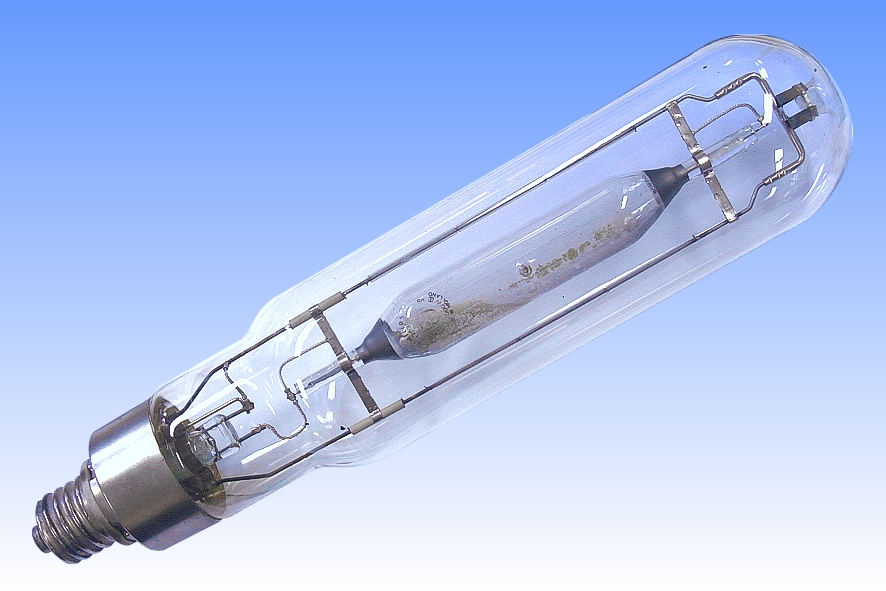
|
Philips HPI/T 2000W 1st Generation |

The quartz arc tube is hand-made, with the molybdenum ribbon leadthroughs being encapsulated into the quartz body by the original shrink-sealing technique in which the softened quartz is collapsed over the foils whilst under partial vacuum. This labour intensive process was quickly superseded in later designs by the pinch-sealing technique.
Heat-reflective coatings of colloidal graphite are applied behind the electrodes, to prevent the occurrence of a cold spot and to keep halide vapour pressures high for maximum performance. It was quickly learned that graphite also has a high vapour pressure causing it to gradually evaporate, and in modern lamps it has been replaced by refractory ceramics. The ends of the arc tube are conical to keep this area as hot as possible. A drawback of this shape is that the temperature changes with burning position, and these variations have a major impact on the emitted spectrum. Later HPI lamps have a cylindrical body with sharp corners to provide a controlled cold spot for stable performance.
The mount frame is glass-sleeved alongside the arc tube in an early but ineffective method to prevent photoemission from the metal surface. Opaque ceramic sleeves are more commonly employed today. The mount frame is supported by a small inward-pointing dimple, whereas in modern lamps a more robust outward pointing dimple has been adopted.




| Manufacturer: | Philips Lighting | |
| Lamp Power: | 2000 Watts | |
| Lamp Voltage: | 245 Volts | 3kV for Ignition |
| Lamp Current: | 9 Amperes | |
| Cap Type: | E40/89x82 | Nickel Plated Brass |
| Bulb Type: | TD-100 | TD-32 in eighths/inch |
| Bulb Finish: | Clear | Borosilicate |
| Electrodes: | Backwound Tungsten | ThO2 emitter |
| Arc Length: | mm | inches |
| Atmosphere: | (Na,In,Tl)Ix | Hg + Ar | Outer: Nitrogen |
| Luminous Flux: | 190,000 lm @ 100h | |
| Luminous Efficacy: | 95 lm/W @ 100h | |
| Colour Temperature & CRI: | CCT: 4300K | CRI: Ra 70 |
| Chromaticity Co-ordinates: | CCx: | CCy: |
| Rated Lifetime: | approx. 5,000 hrs | |
| Warm-up & Re-strike Time: | ||
| Burning Position: | Horizontal | |
| Overall Length: | 465mm | inches |
| Light Centre Length: | mm | inches |
| Factory: | Eindhoven | Netherlands |
| Date of Manufacture: | December 1968 | M8 |
| Original / Present Value: | Unknown | |